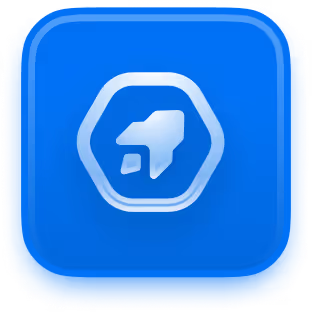_11zon.jpg)
Effective Email Introductions: Templates & Best Practices

In today's world, emails are one of the most common ways we communicate professionally. Whether you're applying for a job, reaching out to a colleague, or introducing yourself to a potential client, your first impression is often made through an email.
According to statistics, over 300 billion emails are sent daily worldwide, and many of them include introductions. So, how do you stand out in this vast sea of emails? How do you introduce yourself effectively to leave a lasting impression?
In this article, we will guide you through the best practices for introducing yourself in an email. We will also provide helpful templates to make the process easier. By the end, you'll know how to craft a professional and memorable email campaign introduction.
_11zon.jpeg)
Best Practices for Introducing Yourself in an Email
Introducing yourself in an email might seem simple, but there are several details to consider to ensure your message is clear and professional. Let's dive into some best practices that will make your email introduction stand out.
Be Clear and Concise
When introducing yourself in an email, it’s crucial to be clear and concise. The recipient should immediately understand who you are and why you are writing. Keep your email brief, typically no longer than 2-3 short paragraphs. Long-winded emails can overwhelm the recipient and lead to confusion.
Use short sentences and simple words. A good rule of thumb is to keep your introduction under 150 words. Remember, the goal is to introduce yourself quickly while giving the reader enough information to understand the purpose of your email. This will help you avoid unnecessary back-and-forth communication.
Use a Clear Subject Line
The subject line is one of the most critical parts of your email because it’s the first thing the recipient sees. If your subject line is unclear or irrelevant, the email may never get opened.
Make sure the subject line clearly states the purpose of your email. For example, if you're applying for a job, you could use: "Application for Marketing Manager - [Your Name]." If you're introducing yourself to a new colleague, you might say: "Introduction - [Your Name], New Team Member."
A good subject line is straightforward, informative, and grabs attention. Keep it between 6-10 words, and avoid using vague phrases like "Hello" or "Important Message."
Personalize Your Email
Personalizing your email can make a big difference. When possible, address the recipient by their name and mention something specific about them or their organization. This shows that you've done your research and aren't just sending a generic message.
For example, if you're reaching out to someone at a company you admire, you could mention one of their recent accomplishments or projects. This small detail can make your email feel more genuine and increase the chances of a positive response.
Avoid using blanket statements or sending mass emails to multiple people at once. Recipients can tell when an email is impersonal, and it can hurt your chances of getting a reply.
Our Success.ai's AI email writer tool helps you quickly personalize emails by suggesting tailored content based on your recipient's details. It saves time while making your messages feel more unique and engaging.
Be Professional but Friendly

While you want to maintain a professional tone, it's important to sound approachable and friendly. Finding the right balance between professionalism and warmth will help you connect with the reader.
Start your email with a polite greeting such as "Dear [Recipient's Name]" or "Hello [Recipient's Name]." Avoid overly formal language, but also steer clear of casual slang or abbreviations.
For example, instead of saying "Hi, I’m reaching out cuz I saw your ad," try "Hello, I’m reaching out because I noticed your recent job posting." A professional tone builds credibility, while a friendly tone encourages engagement.
Include a Clear Call-to-Action
After introducing yourself, always include a clear call-to-action (CTA). The CTA should tell the recipient what you would like them to do next, whether it's replying to your email, setting up a meeting, or reviewing your attached resume.
For example, you could say, "I would love to discuss how my experience aligns with your team's needs. Could we schedule a call next week?" or "Please find my portfolio attached. I would be grateful for your feedback."
Without a CTA, the recipient might be unsure about how to respond, leading to a missed opportunity for further communication.
Sign Off with Your Full Contact Information
At the end of your email, always sign off with your full name, your job title (if applicable), and your contact information. This helps the recipient easily reach out to you if they want to follow up.
A good signature might look like this:
- Best regards,
- [Your Full Name]
- [Your Job Title]
- [Your Phone Number]
- [Your LinkedIn Profile]
Including your contact details also shows that you are open to further communication, whether through email or another medium like a phone call or LinkedIn message.
Email Templates for Different Scenarios
Now that we've covered the best practices, let’s look at some practical email templates you can use for different scenarios. Feel free to modify these templates to suit your specific needs.
Template for Job Application
Subject: Application for [Job Title] - [Your Name]
Dear [Hiring Manager's Name],
My name is [Your Name], and I am writing to express my interest in the [Job Title] position at [Company Name]. With [X years] of experience in [Industry/Skill], I believe I am well-suited for this role and can contribute to [Company’s goal/project].
Please find my resume attached. I would appreciate the opportunity to discuss how my skills align with your team's needs.
Best regards,
[Your Full Name]
[Your Contact Information]
This template is clear, direct, and professional. It gives the hiring manager a sense of who you are and your qualifications without overwhelming them with details.
Template for Networking
_11zon.jpeg)
Subject: Introduction - [Your Name], [Your Industry/Field]
Hello [Recipient's Name],
My name is [Your Name], and I work as a [Your Job Title] in [Industry]. I came across your profile on [LinkedIn/Company Website], and I was impressed by your work in [Specific Project or Area].
I am looking to expand my network in the field, and I would love to connect with you. If you have time, I would appreciate the chance to chat about your experiences at [Company] and discuss how we might collaborate.
Looking forward to hearing from you.
Best,
[Your Full Name]
[Your Contact Information]
This template is perfect for reaching out to someone in your industry for networking purposes. It is polite and respectful of their time while clearly stating your purpose.
Template for Reaching Out to a New Colleague
Subject: Introduction - [Your Name], New Team Member
Hello [Recipient's Name],
I hope this email finds you well. My name is [Your Name], and I recently joined the [Department/Team] at [Company Name] as a [Your Position]. I’m excited to be part of the team and looking forward to working together on [specific project or task].
Please feel free to reach out if there’s anything I can assist with or if you’d like to chat more about how we can collaborate. I’m eager to get to know everyone better!
Best regards,
[Your Full Name]
[Your Contact Information]
This email template is ideal when introducing yourself to a new colleague. It shows enthusiasm and openness to collaboration while maintaining a professional tone.
Template for Reconnecting with an Old Contact
Subject: Reconnecting - [Your Name]
Hi [Recipient's Name],
I hope you’ve been well! It’s been a while since we last connected, and I wanted to reach out to see how things are going with you. Since our last conversation, I have been working on [project/update], and I thought it might be a good time to reconnect.
Let me know if you’d be open to catching up sometime soon. I’d love to hear more about what you’ve been up to!
Best,
[Your Full Name]
[Your Contact Information]
Reconnecting with old contacts is an important part of networking, and this template provides a friendly way to resume the conversation.
Template for Introducing Yourself to a Client
_11zon.jpeg)
Subject: Introduction - [Your Name], Your Account Manager
Dear [Client’s Name],
I hope you’re doing well. My name is [Your Name], and I’m your new account manager at [Company Name]. I will be your main point of contact moving forward, and I look forward to helping you achieve your goals with our services.
If you have any questions or need assistance, feel free to reach out to me directly. I’m excited to work with you and ensure your experience with [Company Name] is seamless.
Best regards,
[Your Full Name]
[Your Job Title]
[Your Contact Information]
For clients, this template ensures a smooth transition and shows that you’re ready to assist them.
Common Mistakes to Avoid
Even with the best intentions, there are some common mistakes people make when introducing themselves via email. Here are a few things to watch out for.
Being Too Informal
While it’s important to sound approachable, being overly casual can come across as unprofessional. Avoid using slang, emojis, or abbreviations like "LOL" in your professional emails. Always err on the side of formality, especially when reaching out to someone for the first time.
Overloading Information
An introduction email is not the time to share your life story. Keep it brief and to the point. Focus on who you are, why you’re writing, and what you hope to achieve. Giving too much information can overwhelm the reader and dilute the main point of your message.
Forgetting to Proofread
Spelling and grammar mistakes can significantly reduce the professionalism of your email. Before sending any email, take the time to proofread it carefully. You could also use tools like Grammarly to catch any errors you might have missed.
Sending Generic Emails
If you send the same generic email to multiple people, it’s likely to be ignored. Always personalize your emails by addressing the recipient by name and mentioning something specific about them. This shows that you’ve taken the time to learn about them, increasing the chances of a response.
Conclusion
_11zon.jpeg)
Introducing yourself in an email can be challenging, but by following these best practices and using the right templates, you can make a strong first impression. Remember to keep your emails concise, professional, and personalized to the recipient. A good introduction sets the tone for your future interactions and can open doors to new opportunities.
By using the tips in this guide, you will improve your email communication skills and increase your chances of building strong professional relationships.
To enhance your communication skills even further, consider trying our Success.ai tools that are designed to help professionals like you succeed in all aspects of their career, including writing effective emails.


Try Success.ai No credit card required
Unlock unlimited access to 700M+ B2B leads, with unlimited email sending & warm-up. Supercharge your growth now with Success.ai!
















.avif)


.avif)





.avif)






.avif)










_11zon.jpg)

-min.jpg)
_11zon.jpg)







.avif)
.svg)
.avif)

